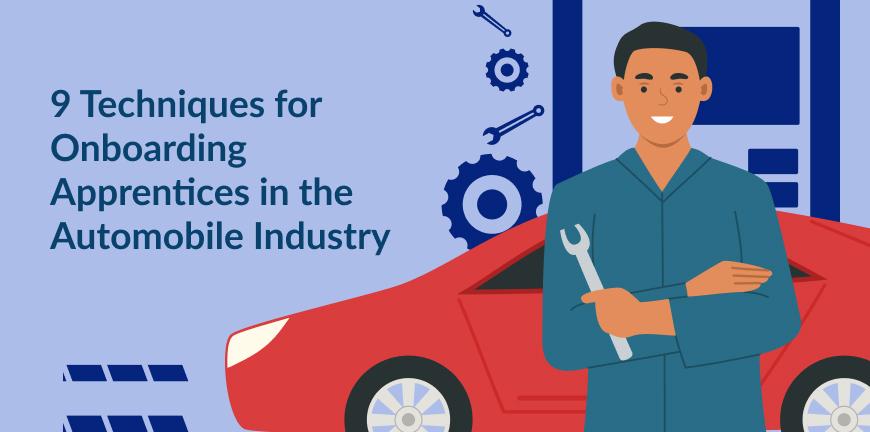
Strategic Upskilling: Top 5 Learning and Development Trends of 2024
12/02/2024
Top 6 Benefits of Hiring an Interim Leader
19/02/2024Batman and his apprentice, Robin, are the dynamic duo to redeem people stuck in a crisis. When he lands in his Batmobile, he makes a statement in Gotham City. This is just one example of great marketing. People know the value of a great car even today. And by the number of Teslas being sold today (435,000 in the third quarter of 2023 itself), the world would not step back from owning a Batmobile itself if they were offered one. The truth, though, is that despite the increased demand for automobiles, the industry itself is at the centre of a crisis in most countries of the world.
How the Trouble Began
It all started with the Pandemic, when people stopped stepping out. The number of orders coming in for new cars declined, as did the requests for service and parts orders. When the pandemic was over, everyone thought that the problems were all over.
But fresh trouble made inroads, and the automobile industry (pun intended) wasn’t ready. The Russia- Ukraine war began, and the supply lines to Europe and the US were cut off. Ukraine was sitting atop a large reserve of Lithium, and the demand for Lithium and Graphite is expected to grow to 4000% if the EV market continues to grow. But will it?
The Story Continues
Then came the layoffs to keep up with the shortage of supply of raw materials for the automobile industry. What happens to an industry that must deal with the shortage of supply, increased demand, and lack of fulfilment when it also lays off employees? It hurts its reputation and reduces customer confidence and employee engagement, and this has affected the entire industry.
The Story in India
Despite these global issues, the story in India is a bit different. In terms of sales, it is the third-largest automobile market in the world, ahead of Japan. The COVID-19-led downturn did affect India, but we bounced back strongly after the pandemic.
The year 2023 again saw increased demand for EVs and cleaner technology. Customers are becoming more value conscious in India, and the situation demands equally capable employees facing the customer and in R&D as well.
The Solution Is Improved Employee Engagement
What can be done to remedy the situation? You cannot focus your efforts on marketing just yet, but you can focus on HR, keeping the employees you have happy and top-of-mind is the way forward. And this must begin right from the day they start to work with you.
It must begin with employee and apprentice onboarding. Because most people who work in the assembly line and other technical roles in the automobile industry start as apprentices, let’s talk about improving apprentice onboarding. Here are some of the things you can do to improve it in the automobile industry.
Is India on the right track?
Short Answer: Yes, we are on the right track. Based on the Automotive Mission Plan 2019-2026, a collective vision of the Government of India and representatives from the automobile industry, a total of 36 million people will be employed by the industry in 2026. Nearly 20 million people were already employed by February of 2023. The automobile industry is very dynamic, with technology changing assembly lines and the designing, building, quality assurance, and even shipping phases in the automobile industry.
To cope with these changes, it is necessary to reskill and upskill the workforce. The jobs may exist in the same domains as currently, but there will be new additions in automobile design, mechatronics, machine learning and advanced analytics, and AI.
There is a mismatch in India between the job roles that will exist in the future and the skills possessed by the current workforce in India. Structured reforms are the way forward to bridge this gap between demand and supply in the Indian automobile job market.
The ASDC, or the Automotive Skill Development Council, has been instituted with the future requirements of the nation in mind when it comes to the automotive industry. It is looking to
- Add over 500 courses and 200 job roles soon in the automobile industry
- Integrate academics with the skills so apprentices know why they are doing and not just what to do
- Cover occupation standards for R&D, Manufacturing, Sales, Service, and driving domains
- Cover critical parameters such as 5S, safety, environment, quality, team work, discipline, communication, and IT
- Develop standards for Industry 4.0, encompassing robotics and electric vehicles
- Increase affiliations with training and assessment partners
- Certification and employment to certified candidates
- Developing assessment mechanisms for trainers/students
- Certifying content to align with standards set by ASDC
- Training and assessment of trainers and assessors
Presently, the ASDC has defined as many as 136 job roles in the automotive industry and developed a curriculum and training methodology for each. This is indeed commendable. The NAPS (National Apprenticeship Promotion Scheme) in India is a major step forward in enabling apprenticeship and currently has over 2000 vacancies in the automobile industry.
Techniques for Apprentice Onboarding in the Automobile Industry
Apprentice onboarding in the automobile industry is
1. Skills and knowledge training to upskill
Apprentices in the automobile industry must be provided skill and knowledge training to upskill. Examples of such skills are automotive design, artificial intelligence, and foundational training in robotics, etc., to help upskill and stay relevant in the future of the company. This is perhaps the most crucial step in onboarding, which is why it is mentioned first.
2. Discipline and work ethics training to build character
A strong character is an asset for any apprentice. To create such attributes in your apprentices, you must conduct discipline and work ethics training. This will help incorporate crucial aspects such as maintaining an organized workplace to ensure that the workflow is efficient. Honesty and transparency will help ensure that the result, a car, is safe and of superior quality, which would save lives on the road.
3. Hands-on Training under a mentor for error-free work
A mentor could be the difference between a vehicle with very little returns during the quality checks and one with many. This is because mentors are already aware of the common misses and errors that can happen and guide the apprentices in the right manner so they don’t make them.
4. Workplace safety guidelines for safer handling of machines
The automobile industry uses several drill bits and other machinery that must be handled with great care. Machines are the future, but the company must not lose a talented employee to a fault in the machine. Accidents can happen on the assembly line if proper precautions are not taken. Make sure that you take all the right precautions.
5. Soft skills training to learn more effectively and help with peer reviews
Soft skills training can help apprentices learn more effectively. It can also help with peer reviews, as apprentices can discuss with fellow apprentices the issues they face or have faced and perhaps even how they overcame them.
6. Gamification of certain aspects of learning, just to make it interesting enough
Either by using an app or by assigning scores at the end of each session of training or work practice, apprentices must be graded and rewarded so that they stay motivated to get ahead and do well if they are offered a permanent job with the auto manufacturer.
7. Training on technology which help simplify tasks
Using technology like 3D printers and IoT, and robotics is the future because they highly help simplify tasks. Such simplification of tasks can help speed up processes significantly in the assembly line and for QA/QC and other processes.
8. Encourage collaboration through workshops
Collaboration through workshops is not an unknown concept, especially in the automobile industry. The more such collaboration between team members happens, the better it is to instill a spirit of collaboration across the board in every team on the floor.
9. Supportive work culture (manager assistance, monetary assistance from management)
Apprentices in the automobile industry are not necessarily all that economically empowered to begin with. If the management can provide any kind of financial assistance, we ae sure every apprentice would wholeheartedly welcome it. Making the workplace less stressful, more proactive rather than reactive all help in creating a supportive work culture, and the immediate managers is at the centre of all this.
The Automobile Industry Can Bounce Back
A history of problems means a lifelong worth of learnings, too. You are here right now, safe and doing well because you solved most of them and are on the way to solving the others, too. Let us hope the same is true for the automobile industry as well. Let’s look back at the recession of 2007-2009 for a sense of perspective.
Between December 2007 and June 2009, the US economy succumbed to the Great Recession, the worst economic crisis since the Great Depression of the 1930s. The US automobile industry was affected, too. Two of the “Big Three” automakers — GM and Chrysler — went bankrupt. Light vehicle sales also dropped by 6 million units. The automobile industry bounced back to pre-recession levels, and in fact, the automobile industry has recovered better than the rest of the economy, the growth of which is weak and uncertain.GM and Chrysler emerged in their ‘slimmer versions’, with much lower debt, fewer plant,s and lesser workers. They returned to profit by 2010, a remarkable story of revival.
The Future of the Automobile Industry is Indian
If it was the American story in 2010, then it is the Indian growth story that gives the whole world hope today in 2024. The automobile industry looks poised for growth, at least in India. Autonomous vehicles are one of the prime automobile industry trends of 2024. According to McKinsey, autonomous driving could create up to $400 billion in revenue by 2035.
The EV market in India is also expected to grow at a CAGR of 49% between 2022 and 2030. Let us hope these figures are more real than reel and not just optimistic. This is what apprentices onboarded into one of those automobile companies would hope for, too, as they journey to become tomorrow’s automobile engineers.
Closing Words
And let’s also hope that apprentices onboarded to automobile companies in India do their jobs well, are rewarded well, and most importantly,y can solve massive real-world problems by themselves. It shouldn’t be the case of Batman trying to rescue his favourite apprentice Robin along with the rest of Gotham City from the clutches of the infamous Joker, as it happens all too often in the comics. It should instead be that of the apprentice being able to save the day all by himself.
Contact Us For Business Enquiry

Rajkumar Shanmugam
Rajkumar Shanmugam is the Head of HR at ALP Consulting, bringing over 19 years of comprehensive HR leadership experience across India and international markets. His expertise spans talent acquisition, employee relations, performance management, compliance, and HR transformation. Rajkumar has a proven track record of driving people-centric initiatives, enhancing workplace culture, and aligning HR strategy with business goals. With extensive experience in US staffing operations and global mobility, he continues to lead organizational excellence through innovation and employee engagement.




